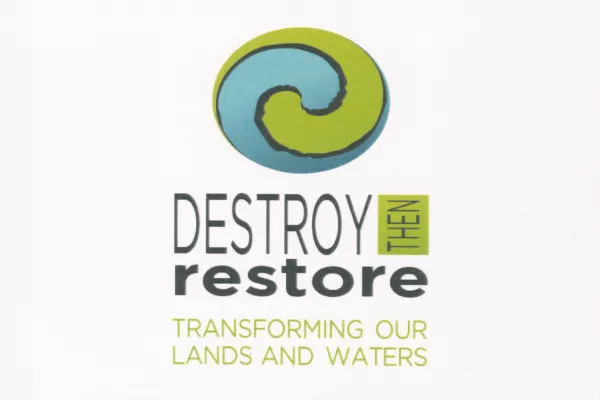Destroy then Restore
Published September 1, 2017
Project Description
In Tar Creek, Oklahoma, clouds of lead dust waft through the streets; toxic ponds and lakes glow rusty red with zinc waste and sludge left behind by mining companies that abandoned the community years ago. How to restore this place?
Since the mid-nineteenth century, humans have destroyed 95 percent of California’s wetlands. Conservation groups now create pop-up habitats for 350 species of waterfowl and wading birds by leasing and flooding agricultural lands during critical migratory periods.
This year-long project explores the dynamic interaction between human societies and natural processes, waters, and landscapes. How ubiquitous is the relationship of destroy-then-restore? How has the relationship evolved through time? Who benefits from destruction and who bears the cost of restoration? Does the growing recognition of our dependence upon natural capital and ecosystem services indicate a shift in this relationship or simply a reconfiguration of the same challenge? To what extent can landscapes and waters be restored? Who decides what and how to restore?
These questions highlight a relationship of destroy-then-restore that human societies have with their lands and waters. Efforts to address and redress the ruin of these places engage issues of design, economics, politics, history, anthropology, ethics, engineering, ecology and more. Destroyed landscapes and waters also engage the arts: Photographers David Maisel and Lu Guang document environmentally ravaged countrysides. In the nineteenth century, writers like Charles Dickens and Emile Zola were already exploring the esthetic and human costs of corrupted landscapes.
We invite faculty from across the curriculum--from the humanities, social sciences, natural sciences, and engineering--to engage with us on these questions and others that emerge from a consideration of impaired and repaired lands and waters. We will be joined in the first semester of our weekly discussions by the fall 2017 Neilson Professor Niall Kirkwood, Harvard Graduate School of Design, whose ongoing work argues for a holistic approach to remediation: ”where the cleaning of land, water and soils becomes a sustainable infrastructural investment for the communities and stakeholders.”
Project Fellows
- Kate Ballantine, Environmental Studies
- Reid Bertone-Johnson, Landscape Studies
- Anna Botta, Italian Studies and Comparative Literature
- Sydney Burt '18, Architecture
- April Cheever '19, Landscape Studies
- Andrew Guswa, Picker Engineering Program, Organizing Fellow
- Emma Harnisch '18, Geosciences
- Molly Hurd '18, Comparative Literature
- Ann Leone, French Studies and Landscape Studies, Organizing Fellow
- Denise McKahn, Engineering
- Steven Moga, Landscape Studies
- Bob Newton, Geosciences
- Timothy Randhir, Environmental Conservation, University of Massachusetts, Amherst
- Amy Rhodes, Geosciences
- L. David Smith, Biological Sciences
- Jane Stangl, Class Deans
- Meghan Suslovic '18, Environmental Science & Policy
- Camille Washington-Ottombre, Environmental Science & Policy
- Paul Wetzel, Center for the Environment (CEEDS)
- Michele Wick, Psychology
